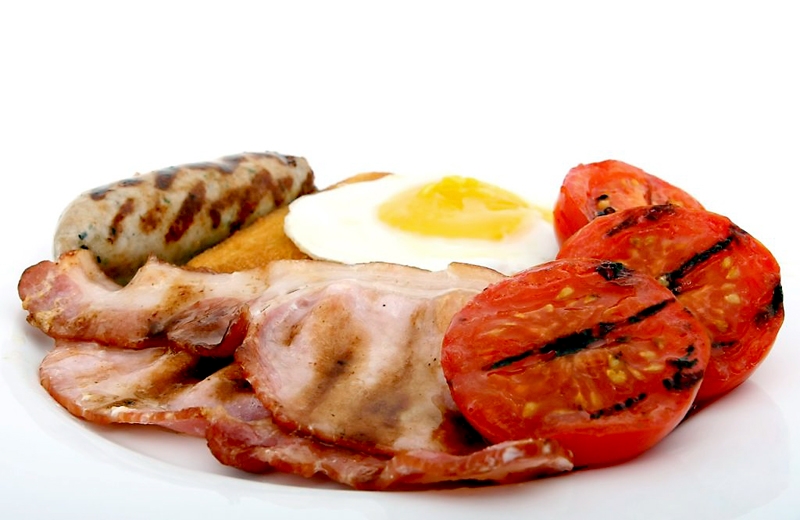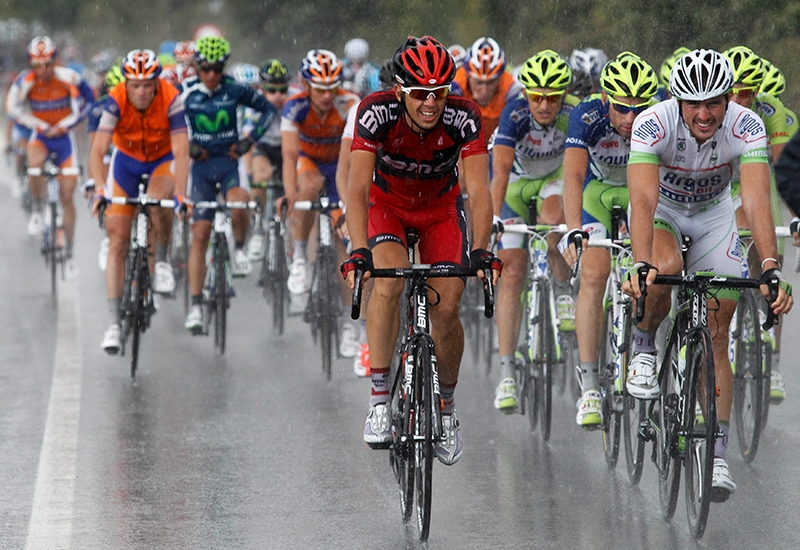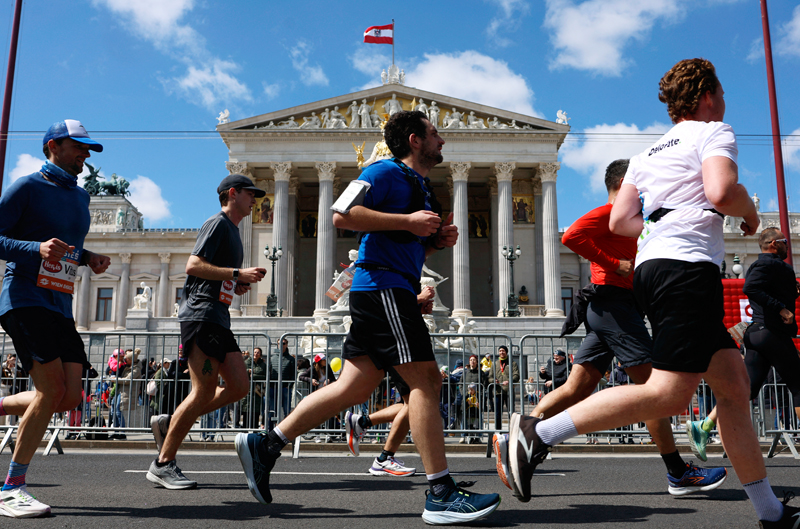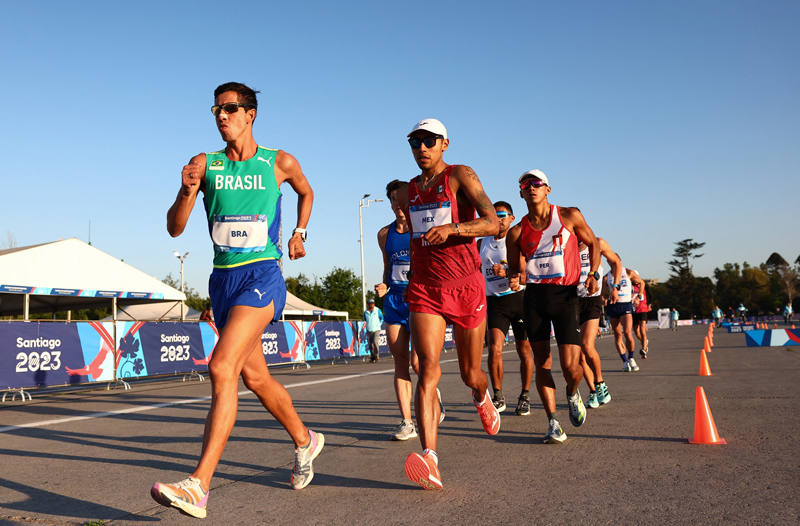You are viewing 1 of your 1 free articles. For unlimited access take a risk-free trial
MCTs: energy and fat loss boost, or busted flush?

Medium chain triglycerides (MCTs) have often been touted as useful supplements for boosting energy and fat loss. But what does the scientific evidence say about their efficacy? Sports Performance Bulletin takes an in-depth look
For many sportsmen and women, the three holy grails of sports nutrition are increased strength, more energy and lower body fat. Increased levels of strength and energy are beneficial to all athletes, while lower levels of body fat are frequently advantageous to athletes where strength to weight ratio is important. Back in the 90s, MCTs were seen as a potential route to two of those aspirations; increased energy availability and lower levels of body fat and as such, became popular – initially with the bodybuilding community but later with some endurance athletes too.However like so many other products in sports nutrition, the scientific reality of MCTs seemed wanting in the light of the (often extravagant) marketing claims and they subsequently fell from favour. However, some later studies suggested that MCTs might offer benefits after all, particularly when it comes to increasing fat loss. In this article therefore, we’ll look at all the evidence – from early to the most recent studies – and try to come up with some definitive recommendations.
What are MCTs?
Before we examine this new evidence, it’s worth clarifying exactly what MCTs are. As the ‘triglyceride’ part of the name suggests, MCTs are a class of fatty acids occurring naturally in some foods such as coconut and palm oils and, milk fat and human breast milk. Like all triglycerides, MCTs consist of a glycerol ‘backbone’ with three fatty acid molecules attached (see figure 1). The bulk of the fat in food is composed of triglycerides whose fatty acid carbon chains are around 18 carbons long (long chain triglycerides). However, in MCTs, the fatty acid carbon chains are much shorter; typically around 6-12 carbons long.Figure 1: Triglyceride structure

The chemical architecture of a triglyceride; the lengths of the fatty acids attached to the glycerol backbone determine whether the triglyceride is a medium or long chain triglyceride. Fatty acids whose chains are 6-12 carbons in length are classified as medium chain triglycerides.
The shorter fatty acid chain length in MCTs alters the biochemical properties of these oils; they require far less energy for uptake and storage in the body and as a result, they’re easier to digest and absorb than ordinary fats1,2. This explains the development and use of MCTs in the 1950s as an alternative food source for patients who were too ill to properly digest normal fats and oils and why they’re still used today3.
There are foods naturally rich in MCTs. One good natural source is coconut oil, although palm oil contains small amounts too, as does milk fat. However, in most of these oils, the percentage of actual MCTs is relatively low compared to long chain triglycerides, so commercially available MCT supplements undergo a process called ‘fractionation’ whereby the MCTs are separated from the other oils, and then concentrated.
MCTs and athletic performance
The role of MCTs in improving nutrition in hospitalised patients, particularly those with critical or malabsorption conditions, has long been documented4-6. However, it wasn’t long before sports scientists began to wonder if MCTs could offer a performance edge to athletes. This is because MCTs are more rapidly absorbed by the body than longer chain triglycerides, and more efficiently converted into fuel for immediate use by organs and muscles.In particular (and unlike long chain triglycerides), MCTs do not require the presence of an amino acid called carnitine to transport them into the mitochondria, the energy producing factories that lie within every one of our cells. The result is a more rapid conversion to a molecule called acetyl-coA, which is a key intermediate involved the production of energy. The theory was that if MCT’s could be converted to energy so readily and boost the key energy intermediate acetyl-CoA, then maybe supplementing MCTs could produce an ergogenic effect, by boosting energy output and by sparing carbohydrate, also extend endurance.
Early evidence
An early study on the swimming endurance of mice seemed to provide evidence for this effect7. The mice were fed a diet containing 80g of MCTs plus 20g of long-chain triglycerides (LCTs) per kilo of their dietary feed for six weeks while mice fed a diet containing 100g of pure LCTs per kilo were used as controls. When forced to swim to exhaustion, The MCT fed group showed significantly greater swim capacity than the control group (89.5 vs. 80.2 minutes). Moreover, the researchers also found that enzymes associated with acetyl-CoA and other energy-producing reactions were boosted as predicted by the theory.In the same year as the mice study, a Dutch study looked at the effects of supplementing MCTs with or without carbohydrate8. Eight well-trained athletes cycled 4 x 180 min at 50% maximal work rate and drank a either pure carbohydrate, pure MCTs or carbohydrate/MCTs solutions. The results indicated that more MCTs were oxidised when ingested in combination with carbohydrate and that the oral MCTs could serve as an energy source in addition to glucose during exercise because the metabolic availability of MCTs was high.
Fly in the ointment
However, while MCTs became popular as a sports supplement, there was a fly in the ointment; while animal studies seemed promising, human studies on MCTs and performance were turning up either inconclusive or negative results. For example, the same Dutch group above carried out a study the following year to see whether the glycogen status of muscle in cyclists altered the metabolism of ingested MCTs – more specifically to investigate whether more MCTs were converted to energy when glycogen sores were low (ie when there was limited carbohydrate availability)9.The cyclists were split into two groups; one group performed pre-trial exercise to lower leg muscle glycogen before ingesting MCTs while the control group maintained high levels of glycogen. During the trial itself, the cyclists ingested either pure carbohydrate, or carbohydrates plus MCTs. The results showed that MCT ingestion didn’t result in increased fat oxidation when muscle glycogen was low, neither did it spare carbohydrate.
An Australian study looked at the effects of carbohydrate or carbohydrate plus MCT ingestion on cycling time trial performance and again turned up a blank10. Eight endurance-trained men completed a time trial as quickly as possible while consuming one of three solutions:
- A 6% carbohydrate solution;
- A 6% carbohydrate plus 4.2% MCT solution;
- An identical tasting placebo (no carbohydrate or MCTs).
A number of other studies on the possible ergogenic effects of MCTs also drew a blank. For example, a US study looked at the effects of long-term MCT supplementation on endurance running performance (as opposed to acute supplementation immediately before or during exercise) and found that taking MCTs produced no improvement in VO2max nor did it extend time to exhaustion or change blood chemistry11.
Likewise, running guru Professor Tim Noakes and his team found no benefits of MCT supplementation and ultra-endurance exercise performance in a study on eight endurance-trained cyclists 12. Not only was there no improvement in VO2max, the hourly sprint and time-trial times were slower in the MCT trial compared to carbohydrate. To make matters worse, half the subjects experienced symptoms of gastrointestinal distress when they took MCTs, a side effect that has been noted in other studies, studies where yet again, no performance benefits were observed13,14.
MCTs turning the focus on fat
The evidence that acute MCT supplementation can enhance performance is pretty non-existent. But does this mean we should dismiss MCTs altogether? Well, maybe not because some studies have suggested that MCTs could offer significant benefits for those trying to lose or maintain lower levels of body fat.An early inkling came back in the early 90s, when researchers investigated the effects of five days of intravenous MCT supplementation on hospitalised patients dependent on total parenteral nutrition15. Compared with an ordinary (LCT) fat infusion, MCTs increased resting energy expenditure, oxygen uptake and importantly, fat oxidation.
However, it was some years later, in an environment of rising incidence of obesity, that researchers began to revisit MCTs as possible method of fat loss/control. A Canadian study fed 19 healthy, overweight men isocaloric (same number of calories) diets rich in either MCT or long-chain triglycerides (as olive oil) for periods of four weeks each16. The researchers looked to see what effects if any MCTs would have on body composition and energy expenditure (30 minutes before and 5.5 hours after each meal).
Compared to olive oil, the MCT supplementation resulted in increased energy expenditure, an increase in fat oxidation and a reduction in body weight. Interestingly, they also discovered that the weight losses were greatest in those subjects carrying the least amount of body fat.
In the same year, a double-blind randomised 12-week study carried out by Japanese scientists, looked at whether a mixture of both MCTs and LCTs could decrease accumulation of body fat in healthy humans17. Eighty two subjects consumed a test bread (containing 14 g of the oil mix containing 1.7g of MCTs) daily at breakfast, while the control subjects consumed bread made only with LCTs. Compared to the LCT-only group, significant decreases in body weight, body fat, subcutaneous and visceral fat were noted in the mixed oil group. As a bonus, a significant decrease in serum total cholesterol was also noted in the mixed oil group.
Further evidence for fat loss
As the years ticked by, further studies continued to throw up positive findings on MCTs and fat loss. The same Japanese group as above carried out a rigorous double-blind crossover study on the effects of a liquid meal containing both MCTs and LCTs on diet-induced thermogenesis (raised resting energy expenditure via an increase in heat production)18. Twenty subjects consumed isocaloric liquid meals containing either 14g of canola oil (pure LCT) or a MCT/LCT mix containing about 12% MCTs. Oxygen and carbon dioxide production were measured, allowing resting energy expenditure to be calculated, and the increase in thermogenesis (cellular heat production) for six hours after ingesting the MCT/LCT mixture was significantly greater than with pure LCTs.Another study carried out in the same year looked at how short-term feeding of high levels of dietary MCT affected energy expenditure and post-feeding fat oxidation rates in eight normal-weight, pre-menopausal women19. The women were split into two groups and followed a diet containing either 61% or 1% of total fat energy from MCTs with the remaining fat energy intake from LCTs. After three weeks, the diets were reversed (ie those who took high MCTs swapped to high LCTs and vice-versa). Although there were no significant differences between resting metabolic rates or post-feeding energy expenditure, fat oxidation rates for the MCT-rich diet was significantly greater than that for the LCT-rich diet throughout the 5.5-hour post-feeding period.
Yet another study found that compared to ordinary corn oil (LCTs), feeding 18g per day of MCTs reduced body weight and waist circumference in 40 moderately overweight free-living type 2 diabetic Chinese subjects20. Moreover, like the study above17, the researchers also found that MCTs produced a healthy drop in blood cholesterol levels.
Why could MCTs help fat loss?
It’s not clear why MCT supplementation seems to help fat loss, but one possible explanation comes from a US study on in-vitro fat cells21. The scientists discovered that when they incubated the cells with octanoate (an MCT), the basal rate of fat-breakdown increased. They also discovered that the MCT-treated cells also showed similar biochemical changes to fat cells undergoing starvation – ie that the MCTs were able to induce changes in patterns of fat breakdown that closely mimicked the effects of starvation.The last decade of research
Given that in science, more recent research is informed by the results from previous studies, let’s now look at the more recent thinking on MCTs – ie from the last decade or so. In one 2008 study, US scientists investigated whether the consumption of oil rich in MCTs improved body weight and fat loss compared with olive oil when consumed as part of a weight-loss program22.Forty-nine overweight men and women, aged 19-50 years took part in the study and consumed either 18-24 grams per day of MCT oil or the same amount of olive oil (LCTs) as part of a weight-loss program for 16 weeks. All the subjects received weekly group weight-loss counselling, and body weight and waist circumference were also measured weekly. Adipose tissue (fat) distribution was assessed at the start and end of the study using a highly accurate body composition analysis scanning technique known as dual-energy X-ray absorptiometry (DEXA).
Taking the MCT oil resulted in lower endpoint body weight than did olive oil, with MCT subjects losing around an extra 1.7kgs compared to olive oil subjects. The researchers also found that trunk fat mass, total fat mass, and intra-abdominal adipose tissue were all significantly lower in those subjects who had taken MCT oil compared to those taking olive oil.
The researchers concluded that the consumption of MCT oil as part of a weight-loss plan improved weight loss compared with olive oil and went on to suggest that ‘MCTs can thus be successfully included in a weight-loss diet, especially as only small changes in the quality of fat intake seem to be useful in enhancing weight loss’.
Reviews galore
A couple of years later, UK scientists carried out a review study (a study that pools data from a number of previous studies) on the benefits of MCTs23. They concluded that as far as exercise performance was concerned, only two studies to date had shown any benefits from MCT supplementation (many more hadn’t). However, they also concluded that MCTs ARE able increase fat oxidation and energy expenditure, as well as reduce food intake, and beneficially alter body composition.Another (more recent) review study focussed on the weight-loss benefits (or otherwise) of MCT intake in adults24. In this study, the researchers analysed data from 13 trials using a total of 749 healthy (not obese) adults where MCTs were supplemented for three weeks or more. They concluded that replacing long-chain fats with MCTs in the diet could potentially induce modest reductions in body weight and composition – although there was still a need to determine the dosage needed for the management of a healthy body weight and composition.
Yet another review study carried out the same year looked at the effects of replacing at least 5g of dietary LCTs with MCTs for a minimum of four weeks, across 11 different trials25. The Brazilian researchers found that MCT supplementation resulted in an average loss of 0.9kgs of body fat and a reduction in waist circumference averaging 1.8cms. However, the researchers were keen to emphasise that not all the studies included were of high quality, and that some caution is required when trying to draw more general conclusions.
Appetite for weight loss?
Over the past three years or so, the research into MCT supplementation in humans has been limited. However, a 2016 UK study by Oxford scientists suggests that a possible contributory explanation for weight loss when consuming MCTs could be a reduced appetite26. In this study, 19 subjects were tested on three separate occasions, where they consumed a beverage test breakfast containing one of the following:- Vegetable oil
- MCTs
- Conjugated linoleic acid (CLA)
Have there been any recent studies on possible direct (ie not as a result of weight loss) benefits of MCTs for exercise performance? Well, one study published last year did conclude that MCTs can enhance exercise endurance via the stimulation of mitochondrial synthesis (mitochondria can be considered the cells’ energy factories)27. However, like almost all of the other MCT studies suggesting an improvement in exercise performance, this research examined running performance in mice – not humans! And while it’s true that the mouse is a useful model for researching human metabolism, we cannot draw any firm conclusions unless any results obtained are supported by subsequent findings from human studies.
Implications for athletes
What are the implications here for athletes and should they impact on your current dietary practices? The first thing to say is that the evidence for using MCTs as an ‘ergogenic’ supplement to prolong endurance or improve performance – in humans at least - is pretty much non-existent. However, maybe by focussing on this aspect, we’ve missed the bigger picture; perhaps MCTs could be a useful dietary addition for athletes trying to lose or maintain body fat?The evidence in this respect seems fairly persuasive, and far more robust than that for CLA, which is popular among some athletes as a ‘fat burner’, despite most of the positive studies being those conducted on animals only. And while some athletes might baulk at the thought of actively adding more fat to their diets, the 20g per day used in these studies is a modest amount, which would displace no more than 200 calories from other vital dietary components such as carbohydrate.
Like all supplements, MCTs are not cheap; however it’s interesting to note that some of these studies demonstrated a weight loss effect with an MCT/LCT mix17,18, which would have contained lower proportion of MCTs than commercially available MCT supplements. For those of you who are inclined to experiment, it’s worth adding here that coconut oil is relatively inexpensive and has an MCT content that compares very favourably with the MCT content of a 12% MCT/LCT mix (see table 1). However, any coconut oil consumed should be unrefined (virgin), cold pressed (not heat treated) and importantly, fresh
Finally, it’s also worth stressing that MCTs are a rich source of energy (containing 8 calories per gram), so if you want to experiment, substitution is the key, not simply adding large amounts of calories to your diet in the form of MCTs. And as ever, all the usual caveats apply – there’s no substitute for a healthy diet based on whole, unprocessed foods, containing minimal amounts of refined, processed or sugary foods – and an eye on total energy intake!
Table 1: Approximate fatty acid content of some commonly used oils in food
| Food | Approximate grams per 100g of different chain length (in blue) fatty acids |
|||||||
| Short and medium chain Triglycerides | Long chain triglycerides | |||||||
| 4 | 6 | 8 | 10 | 12 | 14 | 16 | 18+ | |
| Coconut oil | - | 0.6 | 7.5 | 6.0 | 44.0 | 16.0 | 8.2 | 2.8 |
| Coconut cream | 0.1 | 1.4 | 1.1 | 8.4 | 3.0 | 1.1 | 1.2 | |
| Butter | 3.2 | 2.0 | 1.2 | 2.5 | 2.6 | 7.4 | 22 | 34 |
| Palm oil | - | 0.2 | 3.3 | 3.7 | 47 | 16.4 | 8.1 | 14.0 |
| Olive oil | - | - | - | - | - | - | 12.5 | 83.5 |
References
- New Eng. J Med l969;280:l045-58
- Senior JR, ed. Medium chain triglycerides. Philadelphia: University of Pennsylvania Press, 1968:39-49
- J Food Lipids. 1996 vol 3 (4) 251-257,
- 1995 May-Jun;11(3):275-84
- Intensive Care Med. 1993;19(2):89-95
- Nutrition . 1996;12:766-771
- J Nutr. 1995 Mar;125(3):531-9
- J Appl Physiol. 1995 Sep;79(3):756-62
- J Appl Physiol. 1996 Mar;80(3):949-54
- J Appl Physiol. 2000 Jan;88(1):113-9
- J Sports Med Phys Fitness. 2001 Jun;41(2):210-5
- Int J Sport Nutr Exerc Metab. 2005 Feb;15(1):15-27
- Int J Sport Nutr 1999, 9: 35–47,
- J Appl Physiol 2006; 101: 1733-1743
- J Parenter Enteral Nutr. 1991 Jan-Feb;15(1):27-31
- Int J Obes Relat Metab Disord. 2003 Dec;27(12):1565-7
- Asia Pac J Clin Nutr. 2003;12(2):151-60
- J Oleo Sci. 2007;56(6):283-7
- Can J Physiol Pharmacol. 2007 May;85(5):507-13
- 2007 Jul;56(7):985-91
- Am J Clin Nutr. 2008 Mar;87(3):621-6
- Obes Res. 2004 Apr;12(4):599-611
- Int J Food Sci Nutr. 2010 Nov;61(7):653-79
- J Acad Nutr Diet. 2015 Feb;115(2):249-63
- J Am Coll Nutr. 2015;34(2):175-83
- Nutr Res. 2016 Jun;36(6):526-33
- PLoS One. 2018 Feb 8;13(2):e0191182.
Newsletter Sign Up
Testimonials
Dr. Alexandra Fandetti-Robin, Back & Body Chiropractic
Elspeth Cowell MSCh DpodM SRCh HCPC reg
William Hunter, Nuffield Health
Newsletter Sign Up
Coaches Testimonials
Dr. Alexandra Fandetti-Robin, Back & Body Chiropractic
Elspeth Cowell MSCh DpodM SRCh HCPC reg
William Hunter, Nuffield Health
Keep up with latest sports science research and apply it to maximize performance
Today you have the chance to join a group of athletes, and sports coaches/trainers who all have something special in common...
They use the latest research to improve performance for themselves and their clients - both athletes and sports teams - with help from global specialists in the fields of sports science, sports medicine and sports psychology.
They do this by reading Sports Performance Bulletin, an easy-to-digest but serious-minded journal dedicated to high performance sports. SPB offers a wealth of information and insight into the latest research, in an easily-accessible and understood format, along with a wealth of practical recommendations.
*includes 3 coaching manuals
Get Inspired
All the latest techniques and approaches
Sports Performance Bulletin helps dedicated endurance athletes improve their performance. Sense-checking the latest sports science research, and sourcing evidence and case studies to support findings, Sports Performance Bulletin turns proven insights into easily digestible practical advice. Supporting athletes, coaches and professionals who wish to ensure their guidance and programmes are kept right up to date and based on credible science.













